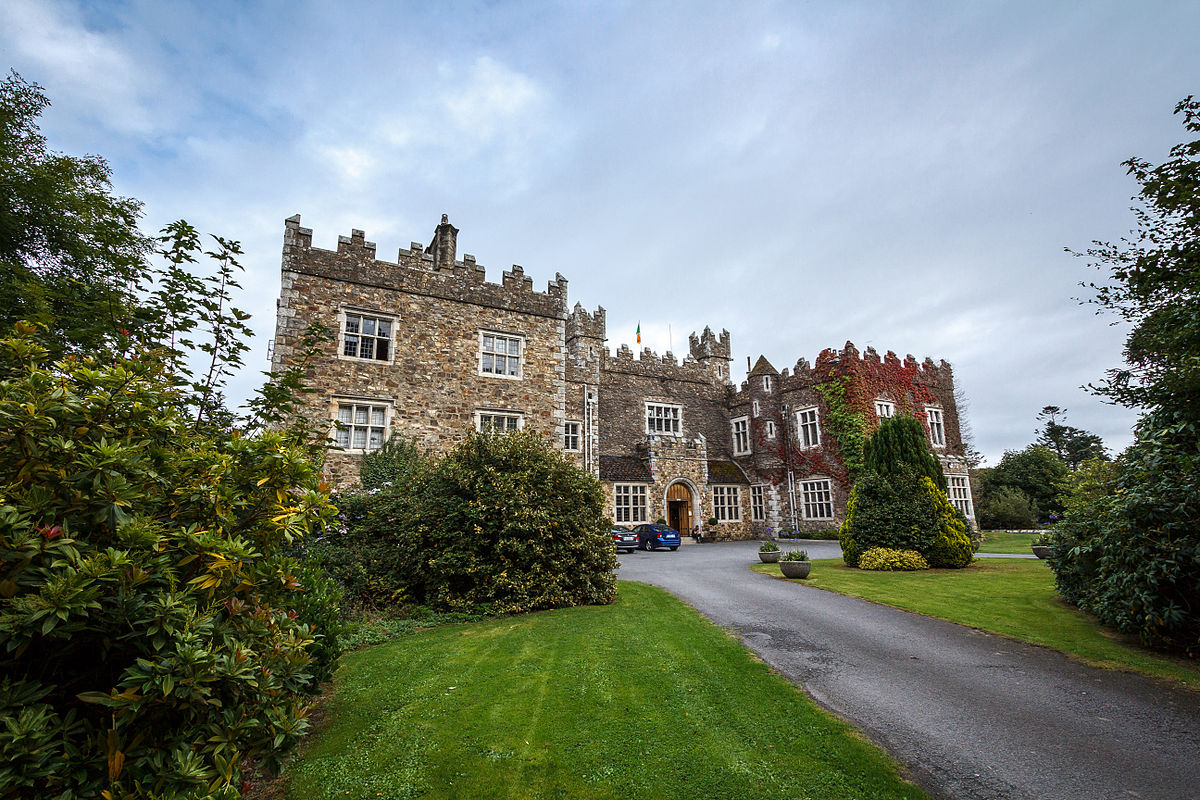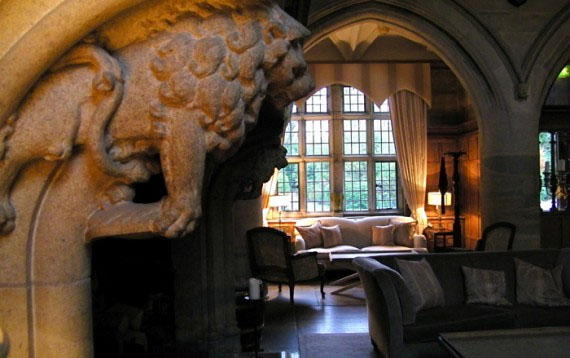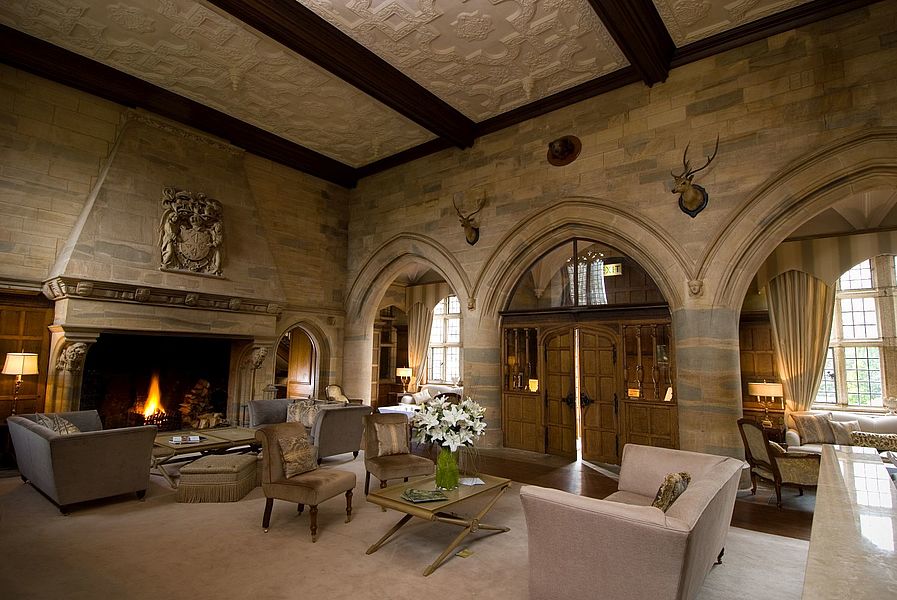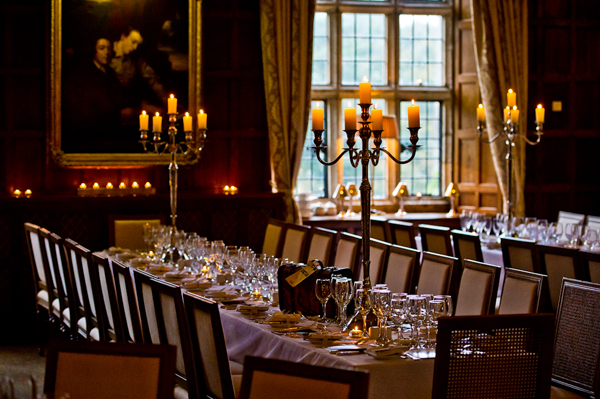Some years ago I wrote a book on Irish painting, and spent many months there doing research and meeting artists--and not incidentally dining and lodging very handsomely. So perhaps it's not surprising that at year's end, I'm feeling a bit nostalgic, and will share thoughts on two of Ireland's best country house hotels--Ballyfin, which is regularly invoked as Ireland's most exclusive hotel, and Waterford Castle, recently acquired and given fresh life.
Ballyfin in County Laois occupies an unrivaled setting. The demesne’s mile-long meandering driveway, its private lake, broad sweep of gravel, and huge porticoed entrance, all create an impression of extraordinary grandeur--which is surely the point. Guests are formally welcomed on the steps and cars and bags are whisked away. The front door opens into a hallway with two standout features – the antlers of a great Irish elk that perished in a bog more than 2,000 years ago, and a Roman mosaic floor brought back from the Grand Tour in the early 19th century by Ballyfin's fabulously wealthy owners Sir Charles and Lady Caroline Coote. Their personal motto “Cost what it may” is evident everywhere, in the fine plasterwork ceilings, the magnificent windows and door cases, the parquet flooring, chimney pieces and columns that appear to be marble but are painted timber – a process that actually cost seven times more than the polishing of mere marble.
Check-in takes place in the Whispering Room, so called because two people standing in opposite corners can hear each other’s whispers thanks to the curved construction of the ceiling. An inner hallway with main staircase hung with portraits of Cootes family members through the ages leads through to a series of eye-popping reception rooms where fires burn through the day and guests sink down into innumerable comfortable armchairs and sofas.
Once settled in, there are almost 10 miles of paths throughout the walled estate. Boating, fishing, shooting, archery and trips through the grounds in a horse-drawn carriage can all be arranged on site. All of this in its modern-day incarnation is the dream of an American industrialist with an Irish-born wife, whose dream project Ballyfin's rescue has been. Such a property will surely never turn a profit.
And yet.
As extraordinary as Ballyfin is, its perfection invites hushed voices. Its polish may be as much about the idea of historic luxury as it is the reality of being comfortably cosseted. While also certainly luxurious, Waterford Castle affords a more intimate kind of indulgence. Accessed only by ferry, arrival itself is a thrilling process, with the lights of the imposing centuries-old building blinking in the darkness beyond. A short, beech-lined drive leads to the castle entrance, where thick sprays of ivy decorate ancient Portland stone walls, complete with leaded glass windows and rooftop gargoyles.
Inside, the aura of history is deepened by Elizabethan oak paneling, graceful arches, and a fine sixteenth-century plaster ceiling. The décor is a mashup of periods, as it would have been in a house that passed through generations in the same family: a pair of George III carved cabinets meet a Louis XVI Aubusson tapestry meet plenty of richly carved Victorian pieces.
The dining room continues the manorial style of Waterford Castle, with oak paneling, an ornate oak mantelpiece, and another exquisite plaster ceiling. After dinner, a guest might retire to the Fitzgerald room, named after a prominent family that owned the castle from around 1160 to the mid-1900s. Here, in an intimate setting, deep-set sofas and soft lighting encourage relaxation and a sense of true ease. A short walk before bed might lead to the sight of a herd of delicate Sika deer, who were introduced to this 310-acre island hideaway years ago and have made it their own.









